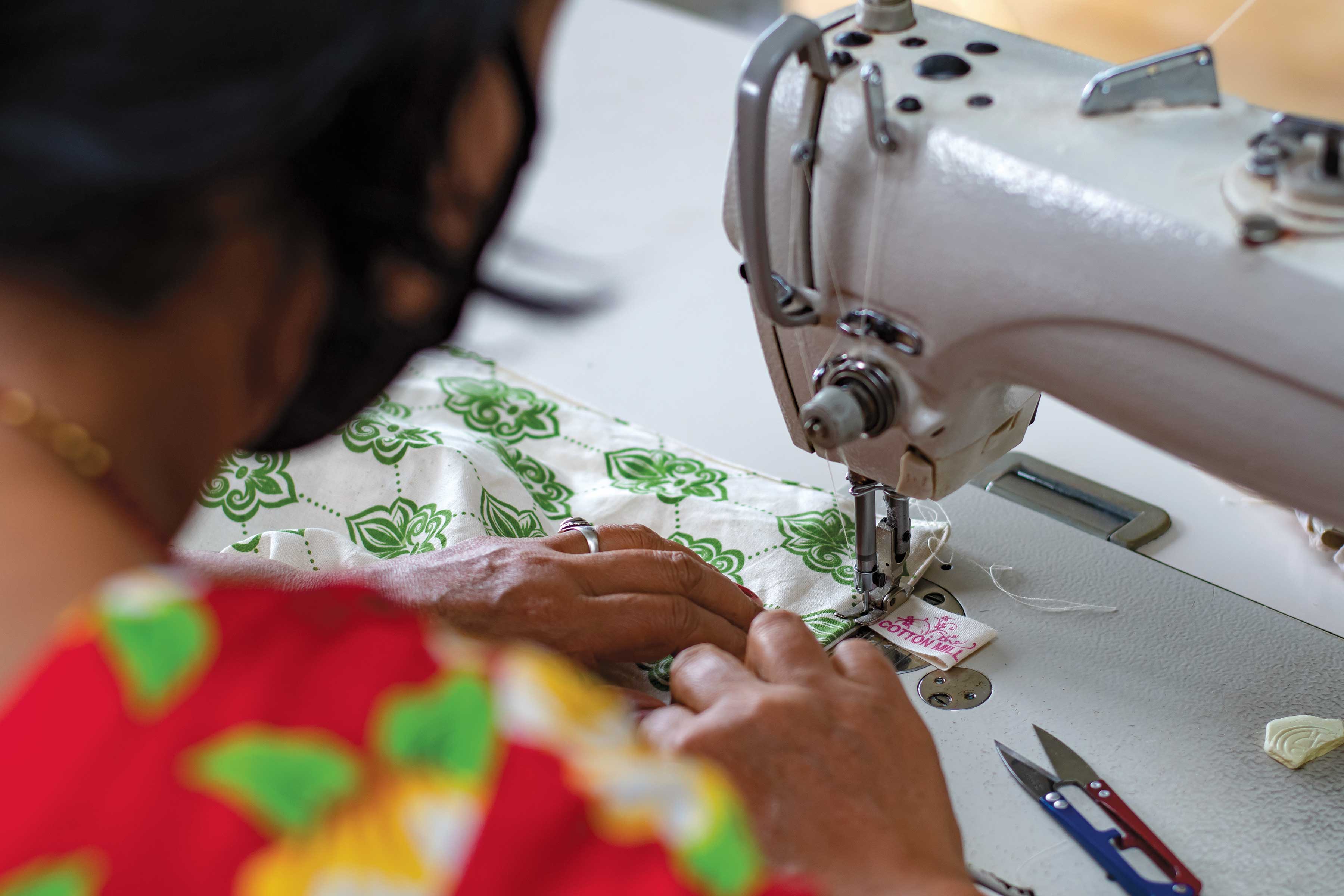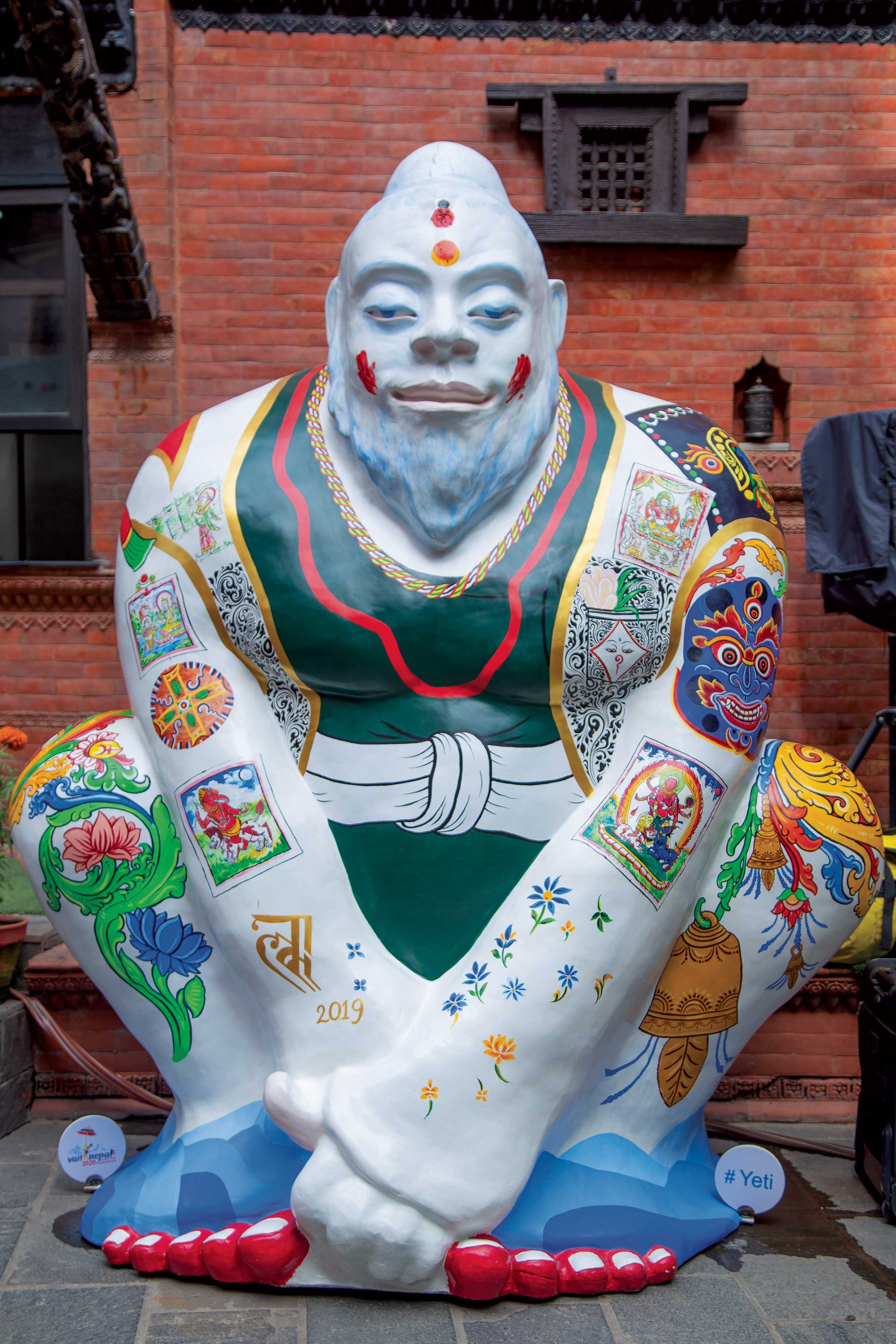A different approach to the launch of a photo book symbolizes the changes in Kathmandu’s vibrant art scene.
As the Gregorian calendar folds on another year, months ahead of the Nepali new year, Kathmandu calms down from a climax of festivals and events into the cozy comfort of the winter months ahead. To an unsuspecting listener, the idea of film, art and music festivals, slam poetry, LGBT sports and concerts might bring up the hum-drum of a happening city far away, but not Kathmandu. Why not Kathmandu? Kathmandu! Three syllables flow down broken roads, past the loud cars, the trash and the dogs, echoing around corners, walled up compounds and reaches its people. Who constantly realize this small metropolis nudging the exotic connotations to the side bar. Proud residents sharing how unusually casual it is to create a home in this chaotic town.
 Another day in the valley, the defunct warm clothes of the morning commute is slowly coming back to use. The sun comes around to the west of the valley. Men and women make rounds carrying dokos full of shifted sand, 5 stories to an open enclosure where the view is wide; Kathmandu swirls around it. In a few months time, the bare pillars and iron bars that outline this space will become a restaurant. Already, there is a gourmet coffee shop at the entrance of the building and a premium furniture mart. So, the laborers are closeted from view. Sand is picked up from the dark basement, and the rear staircase is preferred. When the building is finally done, they will perhaps find a shorter construction site.
Another day in the valley, the defunct warm clothes of the morning commute is slowly coming back to use. The sun comes around to the west of the valley. Men and women make rounds carrying dokos full of shifted sand, 5 stories to an open enclosure where the view is wide; Kathmandu swirls around it. In a few months time, the bare pillars and iron bars that outline this space will become a restaurant. Already, there is a gourmet coffee shop at the entrance of the building and a premium furniture mart. So, the laborers are closeted from view. Sand is picked up from the dark basement, and the rear staircase is preferred. When the building is finally done, they will perhaps find a shorter construction site.
 A 7000 square foot room remains undesignated on the second floor. For now it is filled with music, stationary and artworks ringing to the same tune. There are lights hanging from the ceiling, reinforced by electrical tape. Electricity never goes out here. Only a few feet away from the sand dunes of the basement, a generator gushes hot air and purrs silently to fuel the glitter of the building. Indifferent to its source, the lights illuminate sections of artwork by artists from around the world. Sound technicians at the other end of the un-partitioned floor, speak into microphones: mic-check! mic-check! twiddling knobs till the rebound dissipates. Poets, musicians and visual artists start to rehearse.
A 7000 square foot room remains undesignated on the second floor. For now it is filled with music, stationary and artworks ringing to the same tune. There are lights hanging from the ceiling, reinforced by electrical tape. Electricity never goes out here. Only a few feet away from the sand dunes of the basement, a generator gushes hot air and purrs silently to fuel the glitter of the building. Indifferent to its source, the lights illuminate sections of artwork by artists from around the world. Sound technicians at the other end of the un-partitioned floor, speak into microphones: mic-check! mic-check! twiddling knobs till the rebound dissipates. Poets, musicians and visual artists start to rehearse.
One of the worker hired by the unfinished building cuts in a short break on the second floor and peeks through the glass doors. Broken by his own curiosity that pulls heavier than the sand on his back, he anchors his neck to see. Hidden behind silk curtains the length of a pillar, a girl starts reciting from a piece of paper lit by her mobile phone. Fuzzy photographs flutter on the curtains that surrounds her—words and people are on the screen, she begins:
“Atop the bridge, the smell of piss
Once again invades all atmosphere ”
The man outside the door, peering at her profile only processes the phonetics, the English words are lost on his Nepali ears. But he recognizes by her pacing, it is a poem.
“She turns, tries to wave it off when suddenly she is seized by a sight”
Gravity thwarts his lifted spirit and pulls him back to his chore. Turning away from the door, he hears:
“Rani Pokhari – its silhouette –
Against the distant lights”
And instantly dismisses the possibility of that word, no it can’t be. Inside, another poet takes stage and continues in Nepali,
“What isn’t there?
Man created by gods
Gods created by men
All are here in my chowk”
 At 6:00pm, most of the workers have deserted their stations. The building’s namesake logo comes on. Dimmed and soft-edged, the sign sticks out on the desolate corner of Lazimpat. Rehearsal ended an hour ago. The empty seats suggest everyone is running on Nepali time. People begin to wander in, expecting a book launch, one of those old affairs of formality. Speeches then some more, stale routine. But not here, commonplace today will be checked at the door. Quickly the audience multiplies, but occupancy remains at bare minimum. Half an hour later, people are seated amongst sculptures and paintings and the due performance ensues, music invades all atmosphere.
At 6:00pm, most of the workers have deserted their stations. The building’s namesake logo comes on. Dimmed and soft-edged, the sign sticks out on the desolate corner of Lazimpat. Rehearsal ended an hour ago. The empty seats suggest everyone is running on Nepali time. People begin to wander in, expecting a book launch, one of those old affairs of formality. Speeches then some more, stale routine. But not here, commonplace today will be checked at the door. Quickly the audience multiplies, but occupancy remains at bare minimum. Half an hour later, people are seated amongst sculptures and paintings and the due performance ensues, music invades all atmosphere.
Images the laborer saw before, once again light up the hanging scrolls—slaughtered pigs on their crimson blanket, skinned chicken talons sticking underneath dirty rags. Commotion and calm, people and houses, night lights and gentle rain. Heavy rain and flooded streets, more people and houses. Having had practiced, the poets choreograph their appearance to the breaks in the music and the projections. The audience is seated towards the largest projection, one single white wall, accompanied by a video and disc-jockey. In and out, the nostalgic tune compliments the pictures of Kathmandu and its different faces, spread around the space through multiple projectors.
 40 minutes later the performance ends, and the contributing photo-book is launched; the audience is left with a new experience. Done were the days, when you’d expect Kathmandu not to match the theatrics of a happening place. And how it all came together would yet be another experience of how this city seems to come together. It started some two years ago in 2010 with a multinational photography workshop lead by Philip Blenkinsop. The aim of the study was to capture Kathmandu, unlike a postcard does for a frequenting tourist. A book had never been planned, but the images were nothing short of deserving the binding. Shortly after the second workshop in 2012 the participants had grown to 36 photographers. Around its conclusion and the decision to publish the photographs, a French VJ by the name of Mattheu Crette arrived in Nepal from Mali. He immediately began approaching local institutions for an opportunity to collaborate, one of them was photo.circle. Fast-forward to November, when Kathmandu International Art Festival commenced with Metropark coming on board as the Festival’s latest patrons. KIAF’s photography was curated by photo.circle.
40 minutes later the performance ends, and the contributing photo-book is launched; the audience is left with a new experience. Done were the days, when you’d expect Kathmandu not to match the theatrics of a happening place. And how it all came together would yet be another experience of how this city seems to come together. It started some two years ago in 2010 with a multinational photography workshop lead by Philip Blenkinsop. The aim of the study was to capture Kathmandu, unlike a postcard does for a frequenting tourist. A book had never been planned, but the images were nothing short of deserving the binding. Shortly after the second workshop in 2012 the participants had grown to 36 photographers. Around its conclusion and the decision to publish the photographs, a French VJ by the name of Mattheu Crette arrived in Nepal from Mali. He immediately began approaching local institutions for an opportunity to collaborate, one of them was photo.circle. Fast-forward to November, when Kathmandu International Art Festival commenced with Metropark coming on board as the Festival’s latest patrons. KIAF’s photography was curated by photo.circle.
And finally at the beginning of December, American poet Sarah Kay performed in Thamel, photo.circle recruited their poets from the event. Everything was ready, and KIAF offered Metropark as a venue for the event.
Kathmandu is changing, rather things are coming together, as you’d expect in a place with such diversity and passion. From the laborer who has helped built the cityscape to the word warrior who voices our thoughts and silent photographers sharing their vision of the city, to musicians who inspire to harmonize with sights and sounds and its citizens who support their endeavors. With that synergy anything seems possible, and as far as expectations go, leave room for surprise. Kathmandu will forever remain spontaneous thanks to the people who are working hard to change it for the better.











